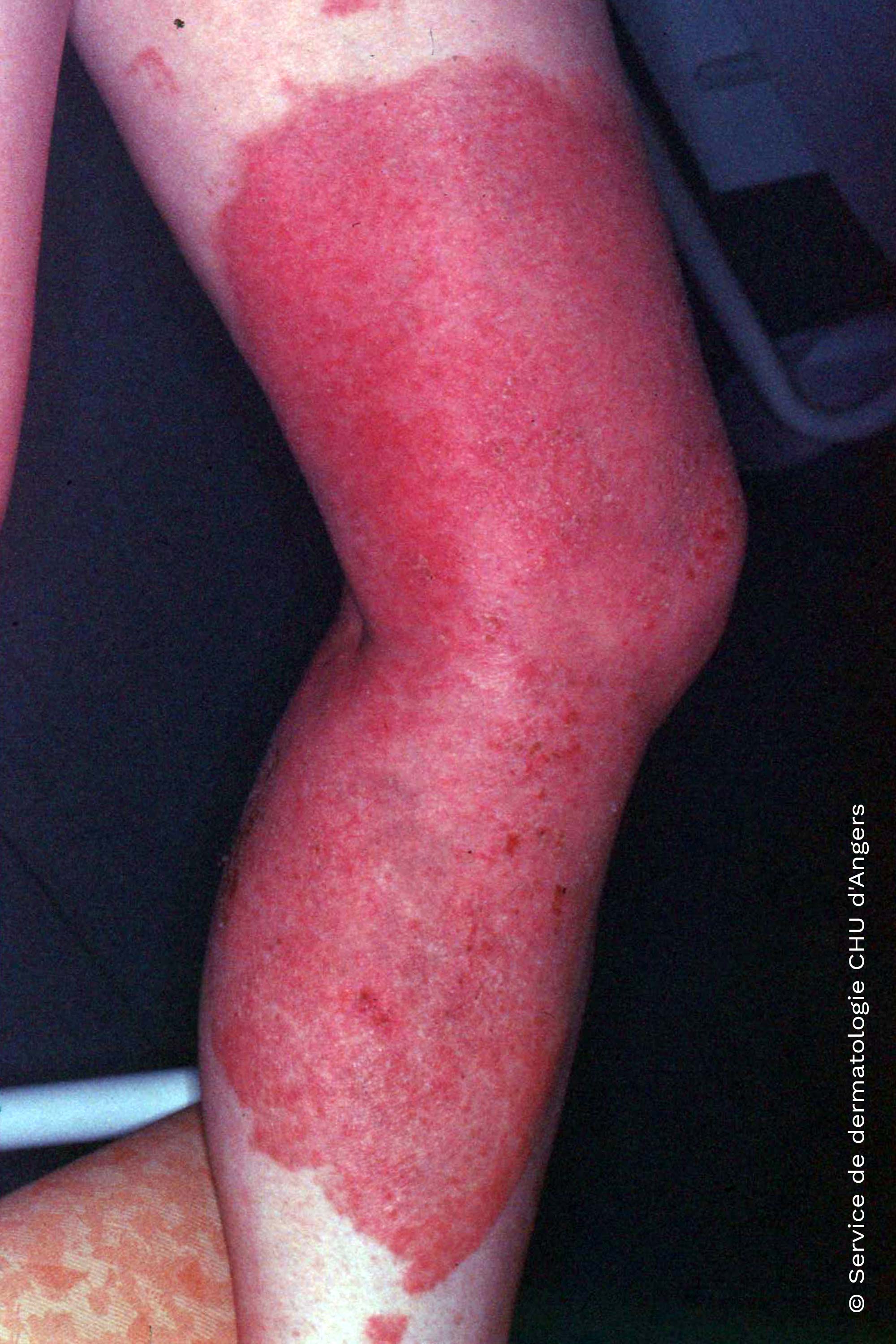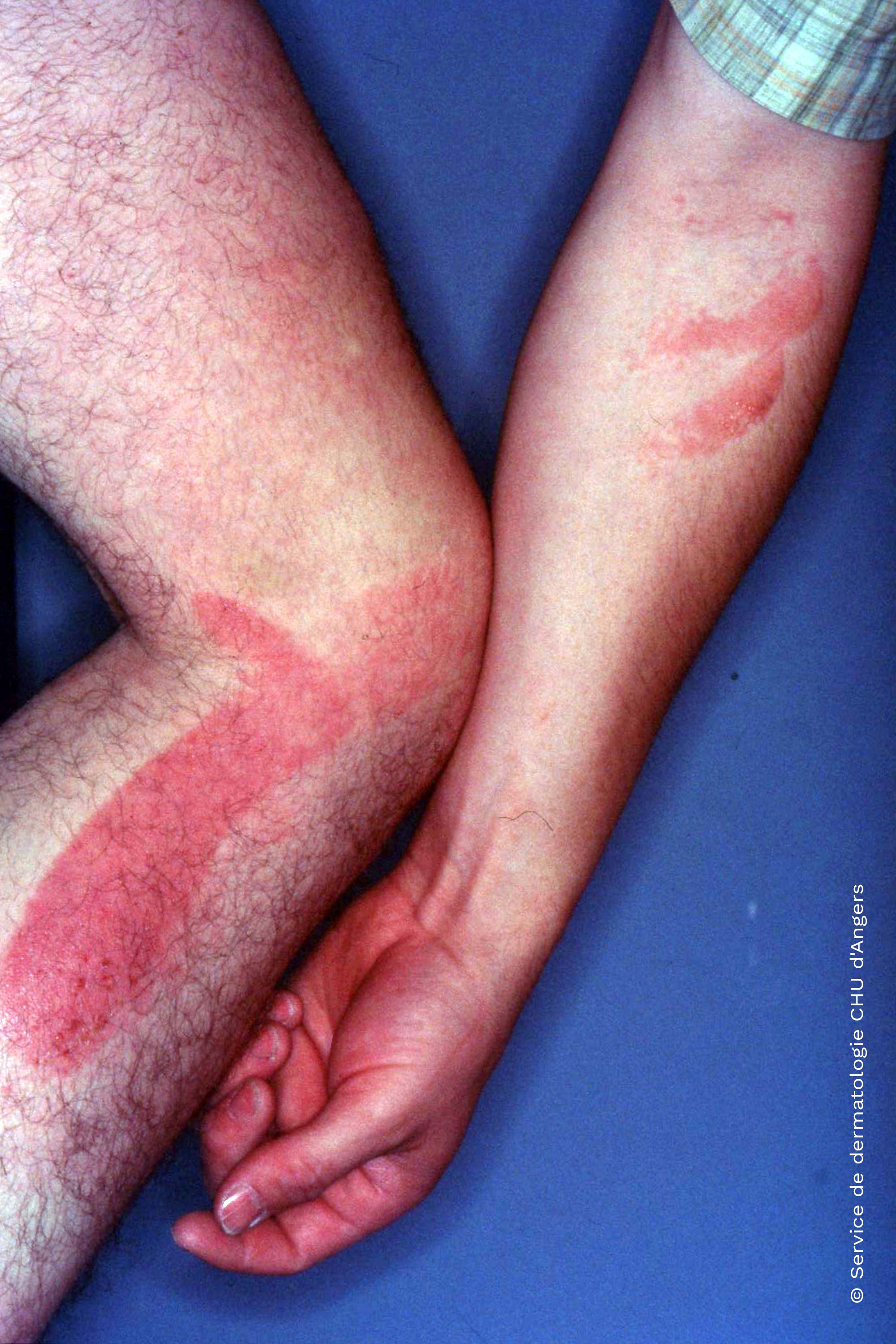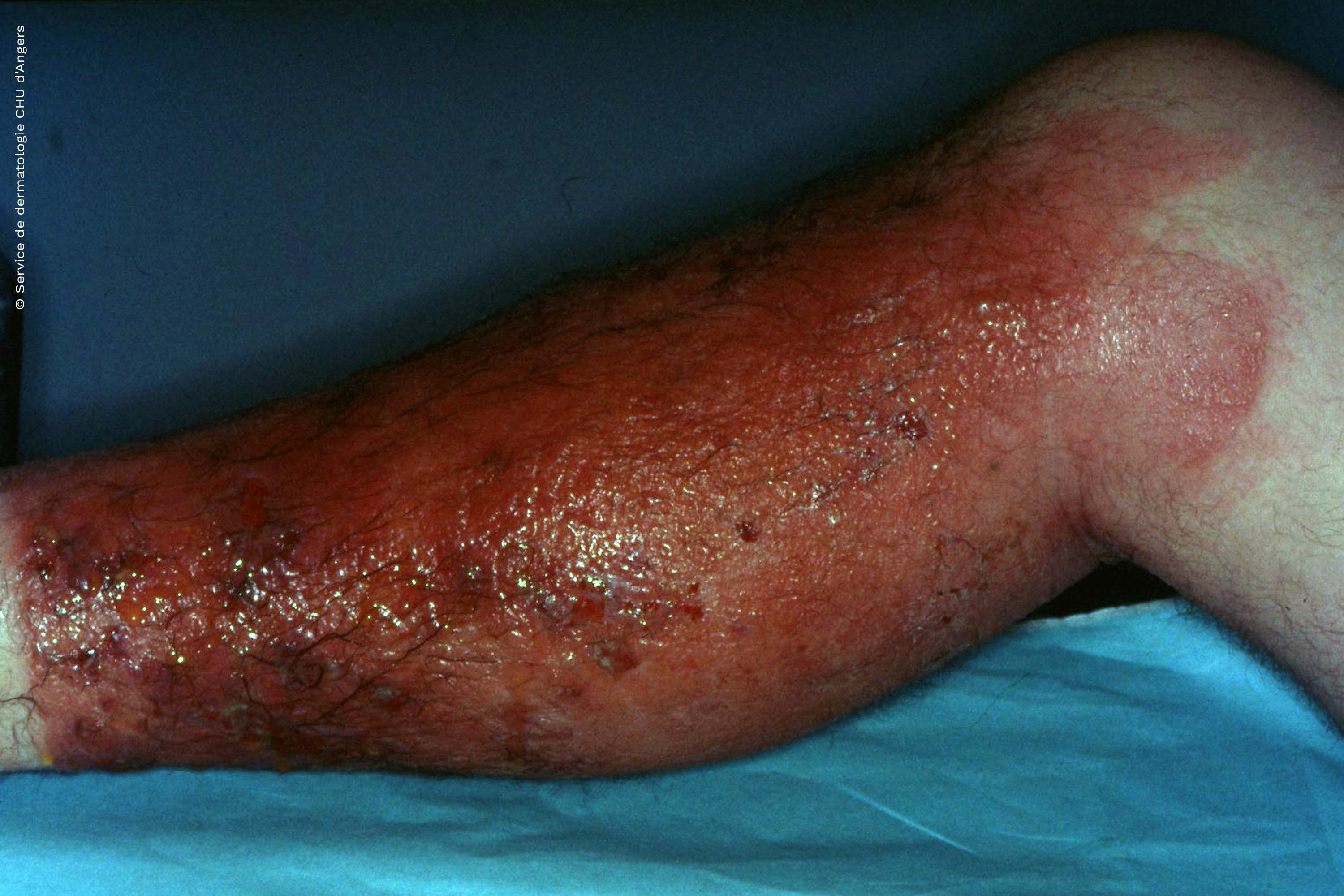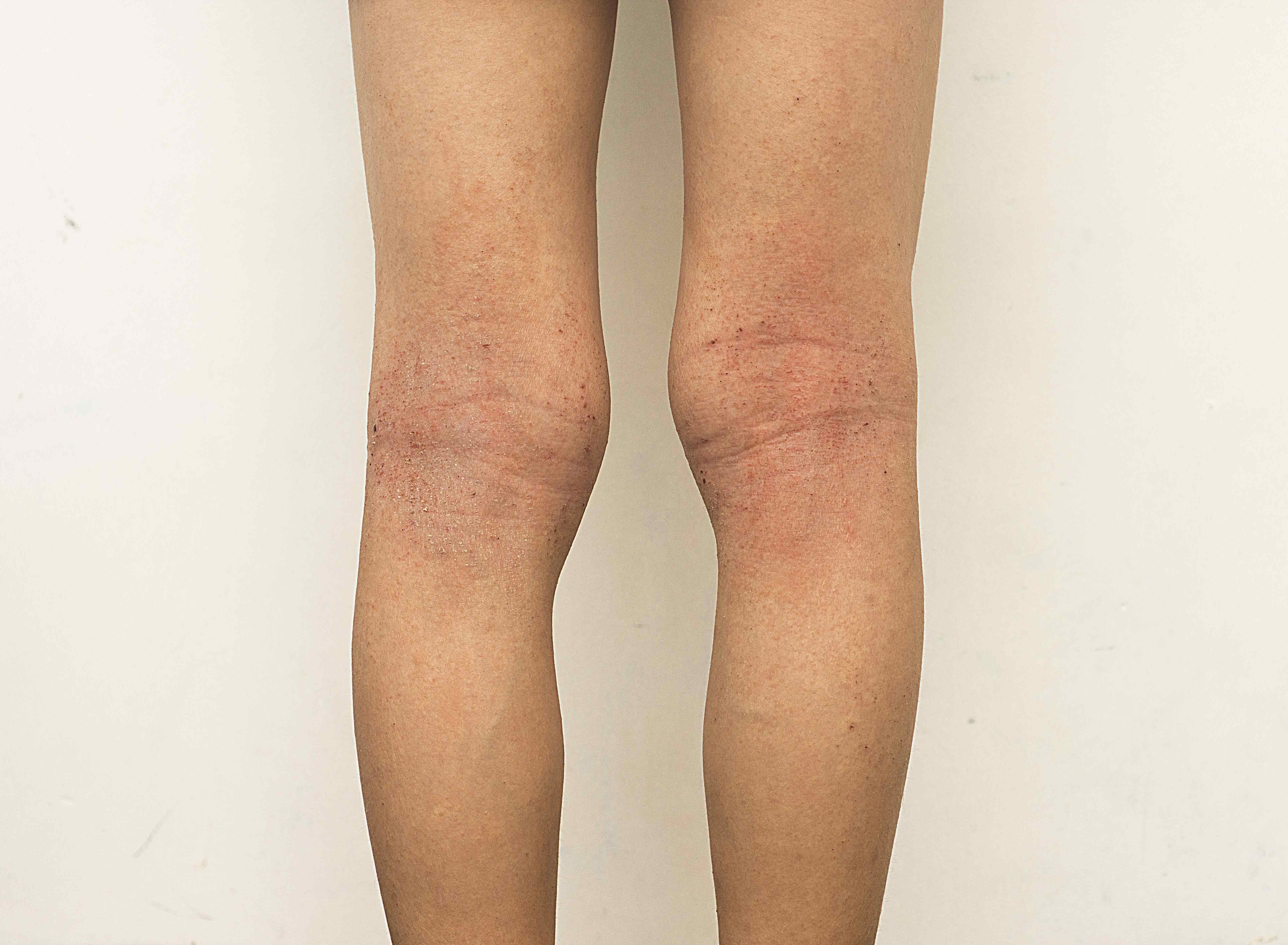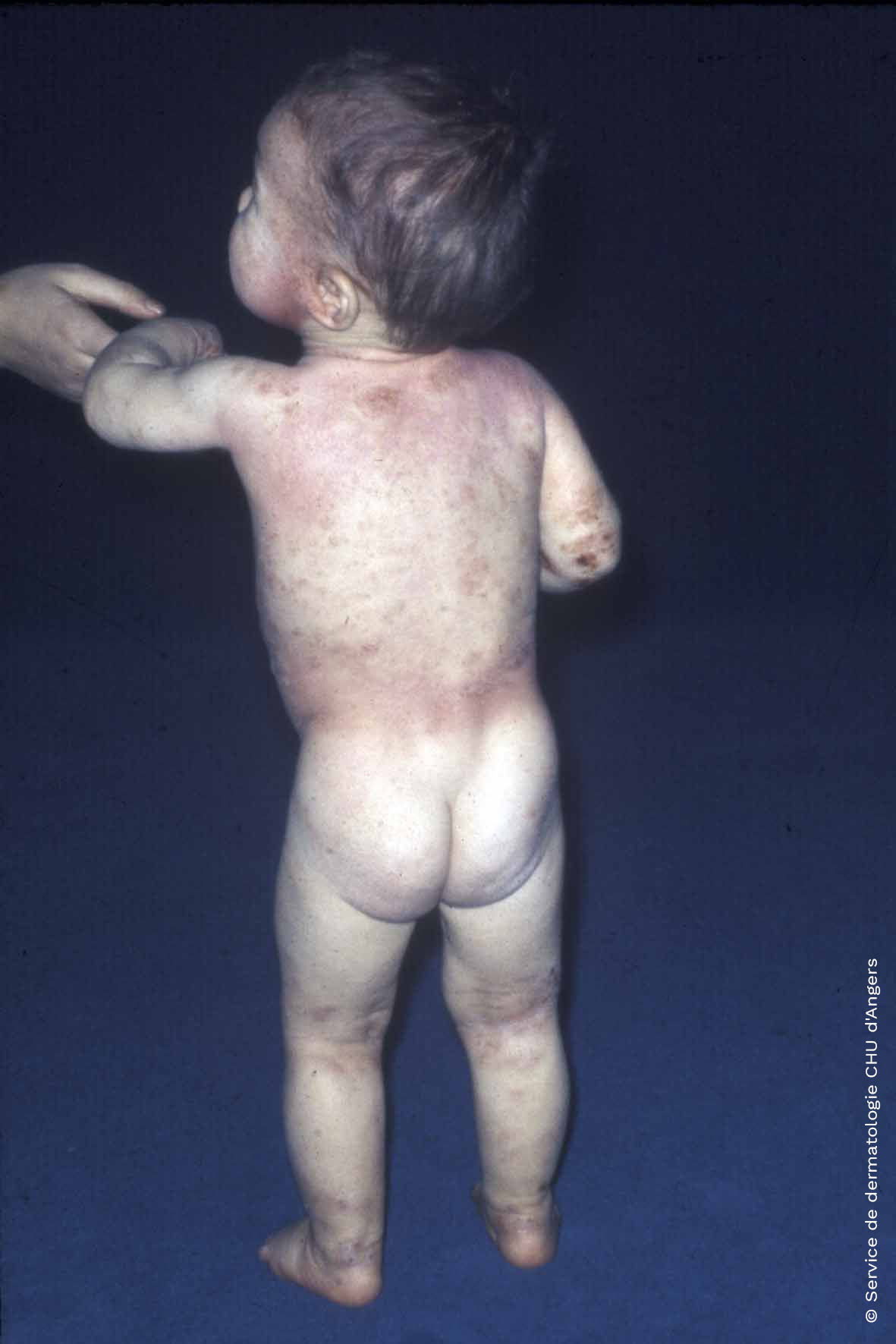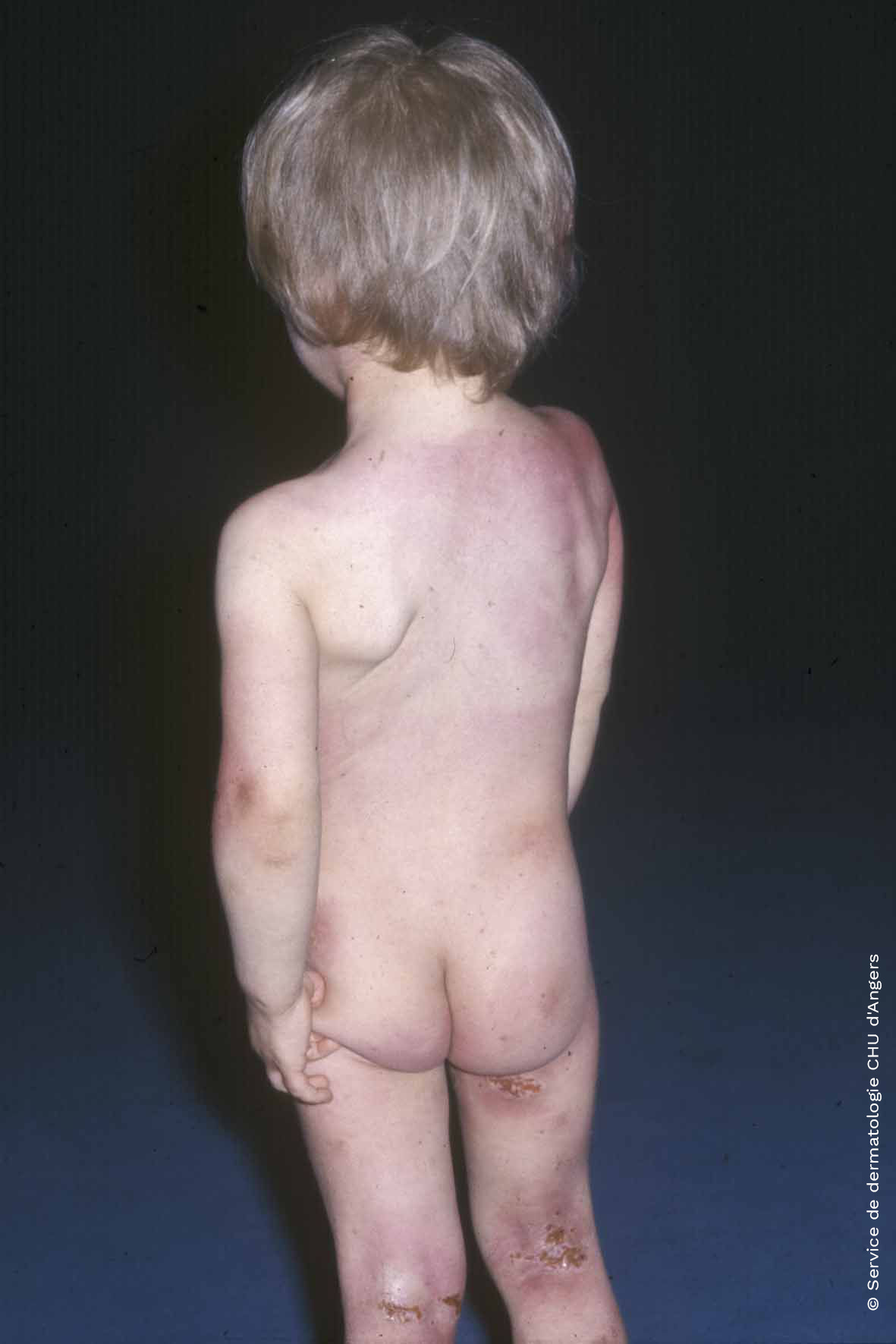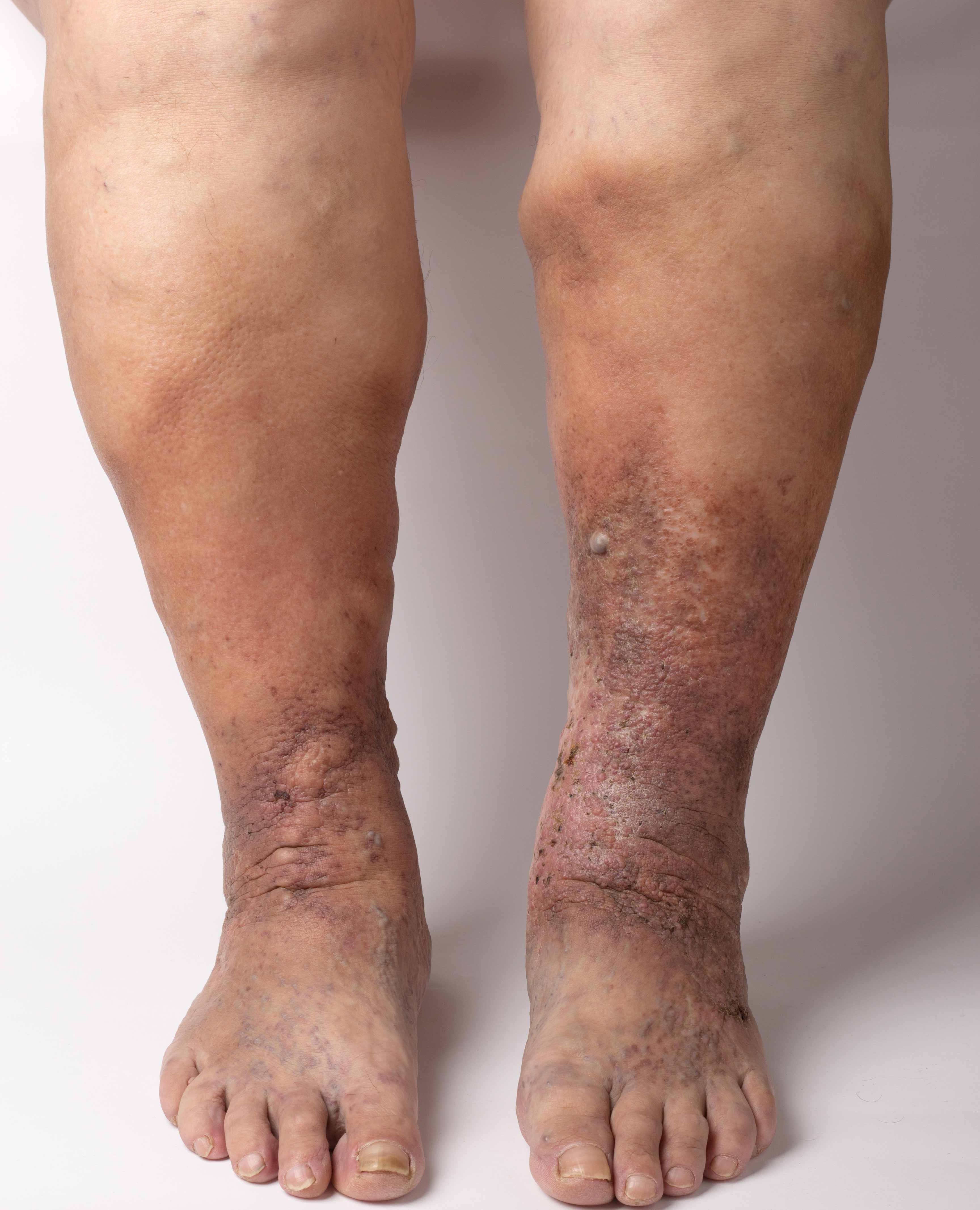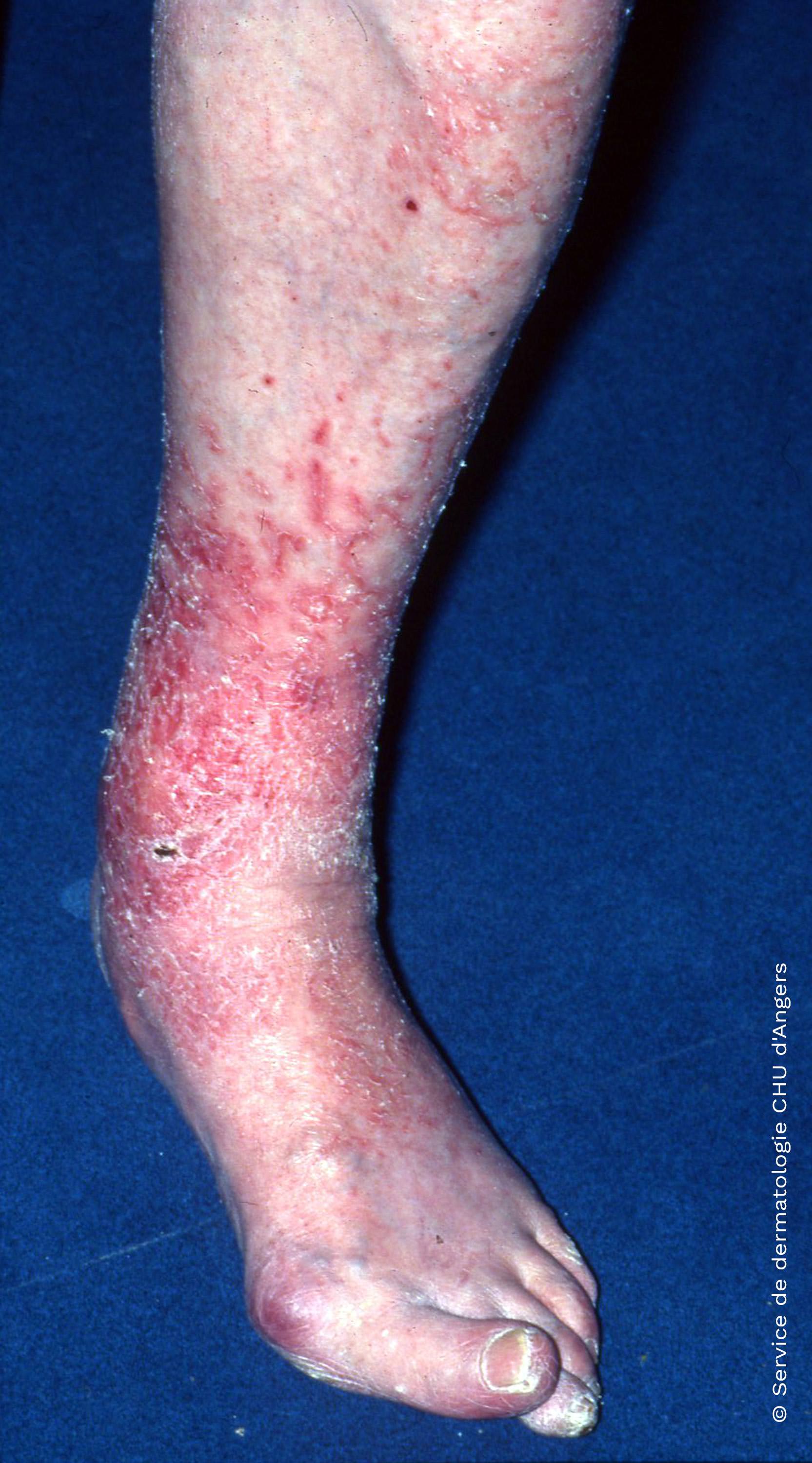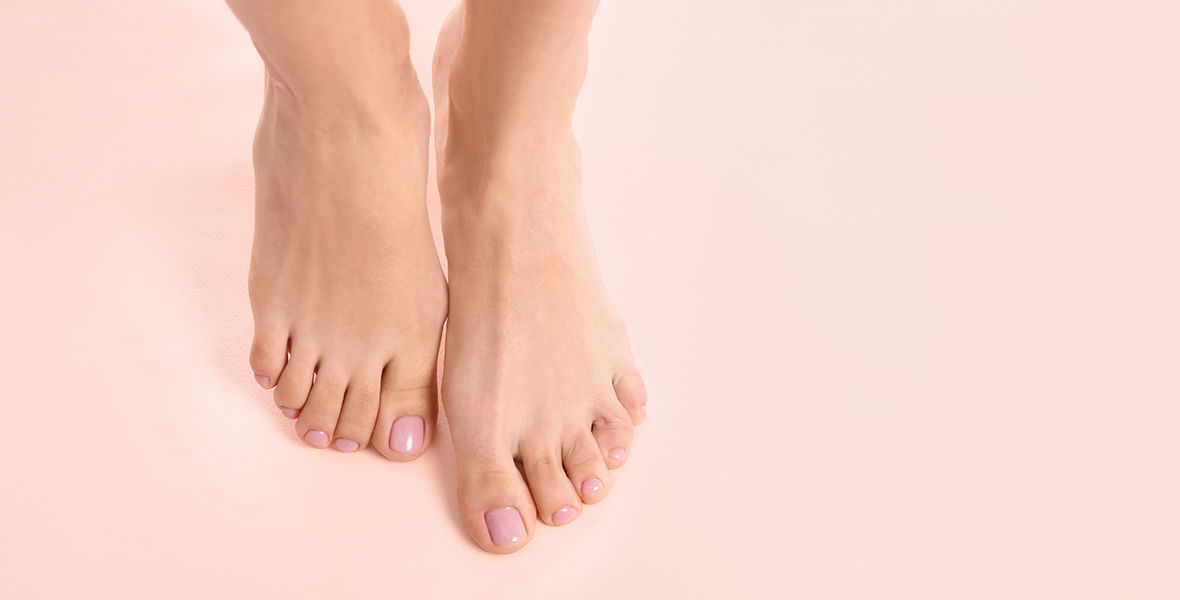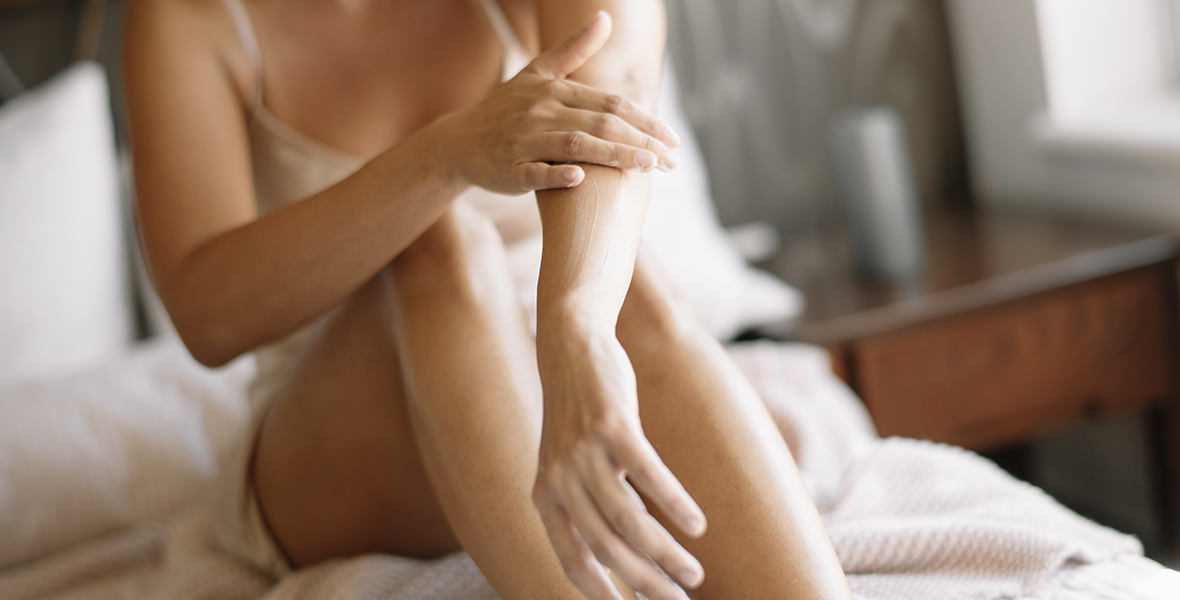

Eczema on the legs
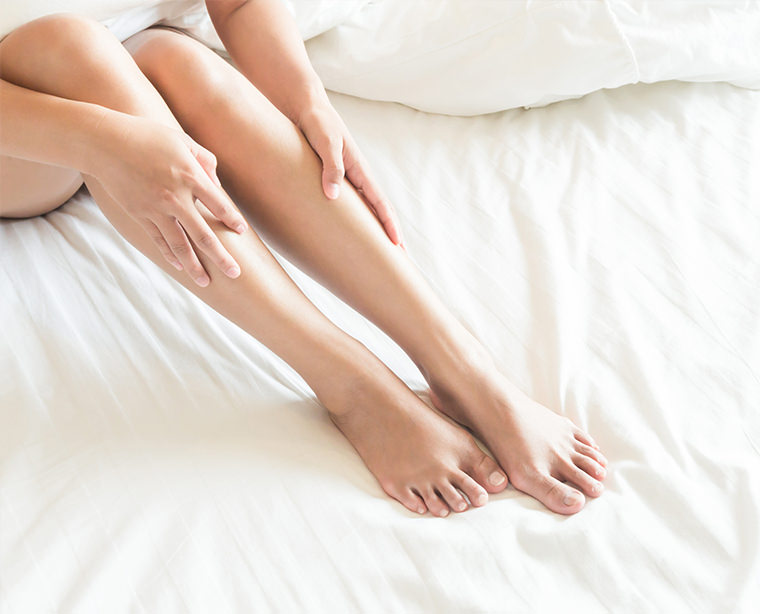
Causes of eczema on the legs and how to treat it
Eczema on the legs could be an allergic reaction, a sign of atopy, or a type of eczema linked to poor circulation. The treatments will thus vary depending on the cause.
Case 1: allergy
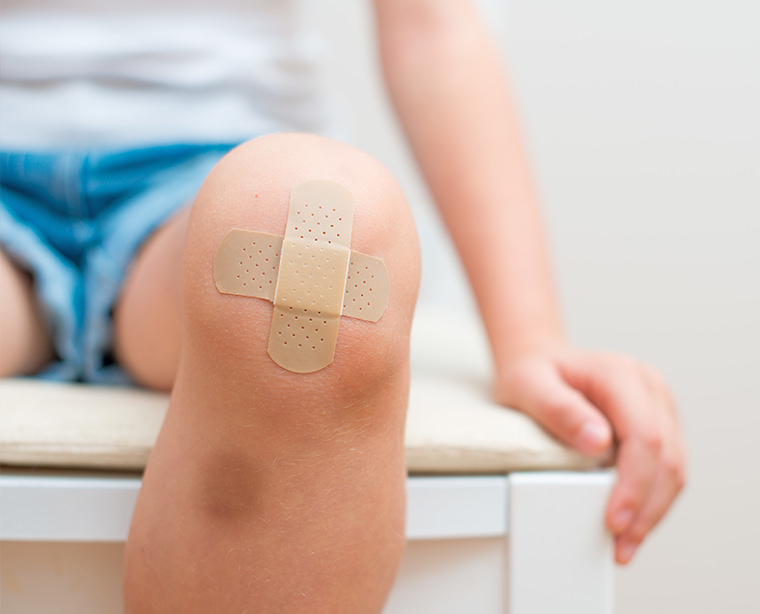
An allergic reaction may be triggered when the legs come into contact with a product or object. Allergic eczema, also known as contact eczema, may affect the legs due to a number of triggers:
- Topical medicines
- Cosmetics
- Dressings
- Clothing
- etc.
The possibilities are endless, making it difficult at times to identify the allergen. Eczema on the thighs, for example, may be caused by an allergic reaction to the toilet seat; whereas eczema around the ankle may be caused by costume jewelry.
Contact with the allergen may have even occurred indirectly: you may have touched your legs after applying a cream to your hands, for example. Or, perhaps your leg touched your spouse’s after they applied a topical anti-inflammatory.
That is why we strongly recommend consulting your doctor. They will know all the right questions to ask as part of a thorough interview in addition to carrying out patch tests to identify the allergy.
Your doctor will also advise you on what other products or objects may contain the allergens responsible, so that you can avoid them.
Of course, they may also prescribe a topical corticosteroid (cortisone cream) to soothe itching and treat eczema.
Case 2: atopic skin
Eczema on the back of the knees is often a sign of atopic skin, especially if redness is affecting other parts of the body as well.
Atopic skin is hypersensitive to its environment and over-reacts to certain environmental factors (pollen, heat, animal hair, etc.).
In some cases, this reaction occurs in the skin, with atopic eczema, but in other cases, this hypersensitivity affects the respiratory system, such as with asthma.
Consult a professional! Your doctor will prescribe a treatment to soothe eczema flare-ups as well as a product to repair the skin during periods of remission between flare-ups.
Case 3: poor circulation and varicose eczema
This very specific type of eczema appears on the lower legs, often in older adults. It affects people with poor blood circulation and with a history of problems such as phlebitis or varicose veins.
Consult your doctor both to treat the eczema and to identify and treat the cause: venous insufficiency of the legs.
This type of eczema is especially common around leg ulcers, usually due to a contact allergy to the dressings placed over the wound or to products applied to the area. The skin surrounding the ulcers becomes damaged and highly permeable to allergens. That is why it is recommended to clean the wound with a physiological serum and to use dressings with a low risk of allergic reaction.
Varicose eczema should not be confused with ochre dermatitis. Ochre dermatitis, as its name suggests, is a brownish-yellow discoloration of the skin on the legs, caused by venous stasis. It does not itch, unlike eczema. It may, however, be associated with eczema.
